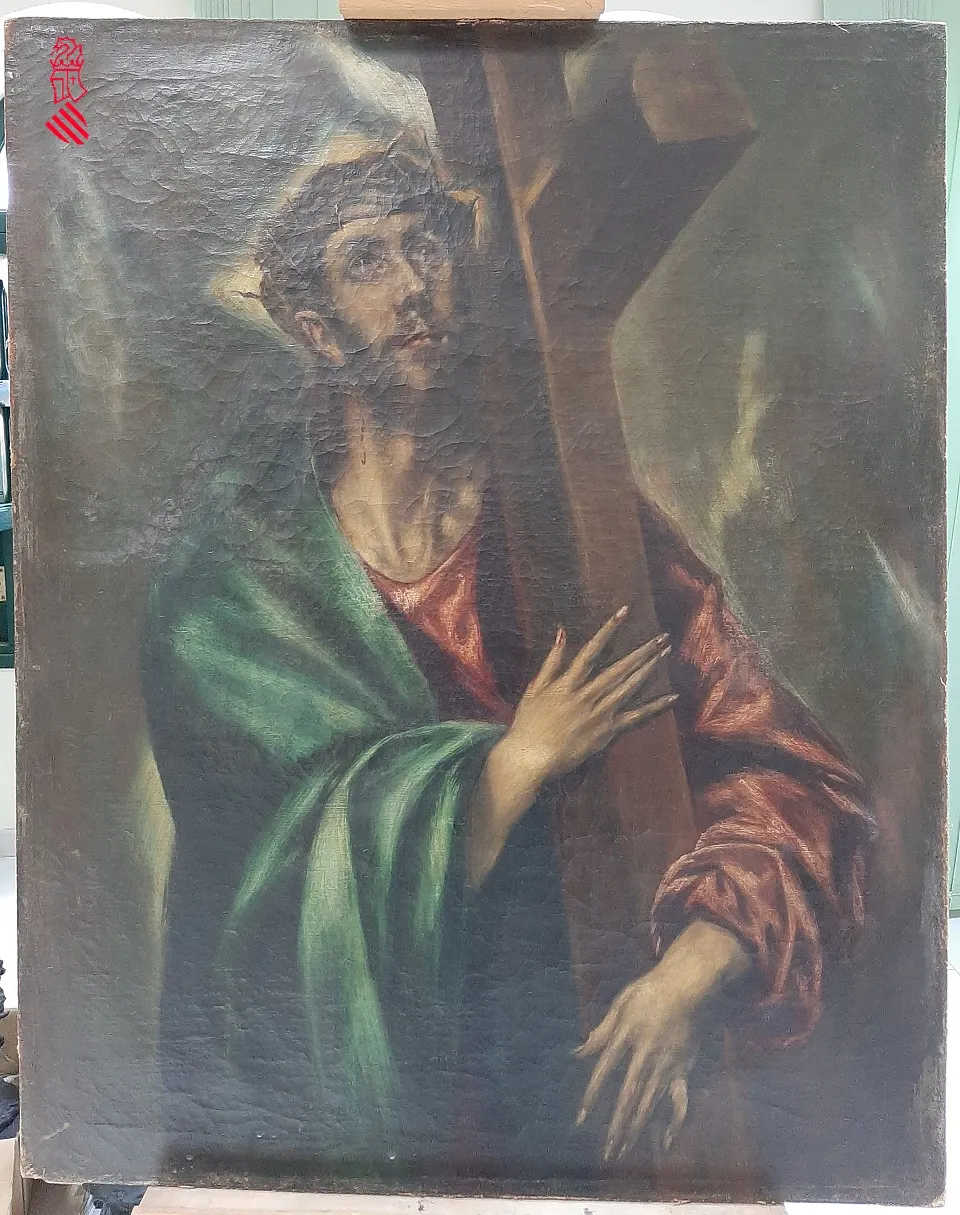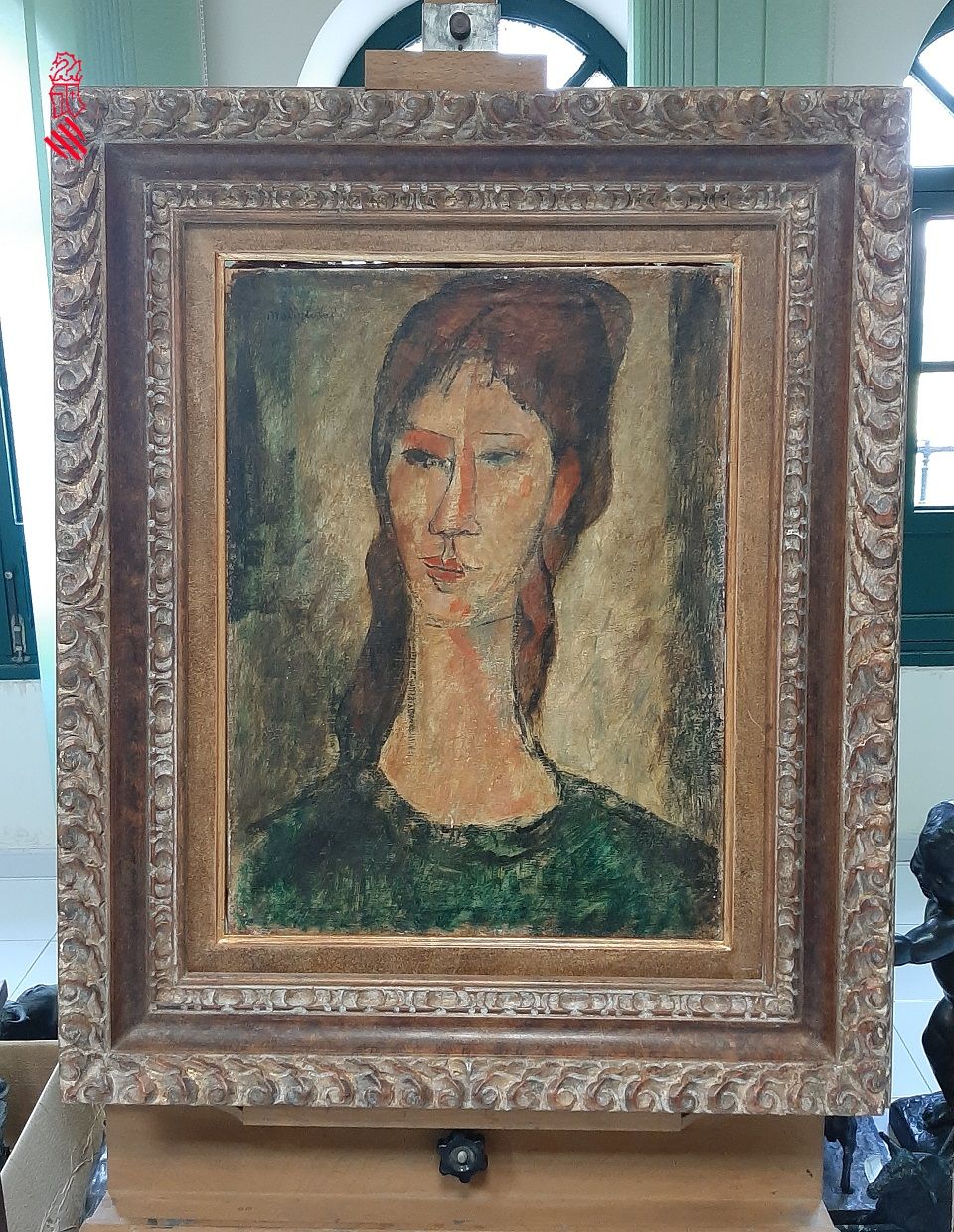A Swindler Almost Sold These Forged ‘Masterpieces’ for $14.7 Million
Spanish authorities halted the sale of the three works, which were falsely attributed to El Greco, Modigliani and Goya
:focal(377x270:378x271)/https://tf-cmsv2-smithsonianmag-media.s3.amazonaws.com/filer/25/53/2553ac97-0d5a-428c-90d1-0f93150e9b17/forgeries.jpg)
Investigators in Spain recently prevented a multi-million dollar art crime from taking place, local authorities announced in a statement this week.
As Spanish newspaper El País reports, police seized three forged paintings from an unnamed art dealer who had been attempting to sell the works as masterpieces by El Greco, Amedeo Modigliani and Francisco de Goya. The canvases’ collective asking price was $14.7 million (€12.5 million).
The non-specialist collector allegedly planned to sell the forgeries, whose “provenance” was outlined in accompanying false documentation, to black market buyers in Germany, Switzerland and Mexico in exchange for a 10 percent commission, per the statement. Buyers had already lined up to purchase the faked goods.
La Policía de @generalitat interviene obras falsas de Modigliani, El Greco y Goya que iban a venderse por 12,5 M€ en el mercado negro
— GVA Justícia, Interior i Adm. Pública (@GVAjusticia) March 28, 2021
Un coleccionista intentaba, presuntamente, comercializar las obras en el mercado negro
INFO https://t.co/DPj5C28OqL
pic.twitter.com/SSUK9uU6wr
Then, writes Claire Selvin for ARTNews, the historical heritage group of the Valencian Generalitat Police and the brigade of historical heritage of the National Police Corps stepped in to stop the sale from taking place. Authorities plan to pursue legal action against the dealer, who lives in the Toledo province of Spain. According to the statement, experts from the Sephardic Museum of Toledo and the National Museum of Prague have studied the works and issued reports certifying that they are counterfeits.
As Artnet News reports, the dealer had planned to sell the forged Goya and El Greco works for $2.9 million and $1.7 million, respectively. Goya achieved fame as as a royal court painter during the late 18th and early 19th centuries. El Greco—otherwise known by his full name, Doménikos Theotokópoulos—was a renowned Spanish Old Master painter whose late 16th-century religious scenes feature distinctive, lurid colors and elongated figures.
The El Greco forgery, which depicts Jesus Christ holding a wooden cross and wearing a crown of thorns, preserves many of the artist’s trademark elements. In January, art historians at the University of Lleida in Catalonia attributed a similar portrait of Christ to El Greco—but some scholars criticized the assessment, citing a lack of documented provenance. (The connection to El Greco is “wishful thinking at best,” Fernando Marías, an art historian at Madrid’s Universidad Autonoma, told the Art Newspaper’s Gareth Harris at the time.)
The crown jewel of the proposed sale was a fake Modigliani portrait of a woman. Per Artnet News, the painting almost sold for $10 million.
Modigliani was an Italian Jewish artist who painted angular portraits and nudes in the early 20th century. As Milton Esterow wrote for Vanity Fair in 2017, public and commercial interest in Modigliani’s works has skyrocketed in recent years, causing the price of his works to soar. At the same time, this newfound attention has led to a spate of hoaxes and attempted forgeries, as well as major controversies over the authentication of works attributed to the artist.
“The resale of forgeries is a persistent problem in the art market that worries police agencies,” says Antonio López, head of the historical heritage group, in the statement, per Google Translate.
López notes that the rise in forgeries also poses a problem for “collectors, dealers of art, and the family heirs of the artists, who see how the illegal circuits of commerce increase.”
/https://tf-cmsv2-smithsonianmag-media.s3.amazonaws.com/accounts/headshot/nora.png)


/https://tf-cmsv2-smithsonianmag-media.s3.amazonaws.com/accounts/headshot/nora.png)